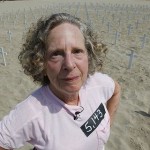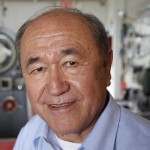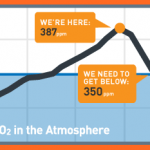Every time I hear someone say “I’m just a volunteer,” I feel like pulling that person aside for a pep talk. Like ‘just a housewife’ which once kept women in their so-called place, this phrase speaks of self-sacrifice and low status. It has no place in the reality of what community service is and could become in the 21st century. One fact: U.S. Government data for 2008 show that 61.8 million Americans or 26.4 percent of the adult population contributed 8 billion hours of volunteer service worth $162 billion*. Much harder to calculate is the impact of community service on civic life, except when one tries to imagine what life would be like without the hundreds of nonprofit organizations, foundations, faith-based charities, service clubs, and the PTA.
Possibly someone who calls herself just a volunteer hasn’t found a fit between her skills and an organization that knows how to put them to good use. Sure, we all gladly stuff envelopes, work the phones and canvass during a campaign, but if you regularly donate your time, you need — perhaps even more than people on the payroll – a clear sense of mission and how your efforts are helping accomplish it. Research shows that the real challenge is retaining volunteers, one-third of whom quit after the first year. If you are one of these folks, think again.  Whatever you have to bring to the table, there is the right match for you, and a world that badly needs your time and care.
There is much evidence that suggests we are hardwired for altruism. Good Samaritans of all ages, shapes and sizes turn up all the time. People risk their own lives to save someone else’s. Why? Because, as people committed to community service soon discover, it feels good to give. Brian Mullaney, co-founder of Smile Train, puts it this way: “The most selfish thing you can do is to help other people.â€Â Children do it. Busy people do it. Even those of modest means and education do it.
I think of the story our UU minister told last Sunday. On the way home from a wedding ceremony in rural New Jersey, her car broke down. It was getting dark as she got out, dressed in high heels and long minister’s robe. She stood by the highway, trying to flag down some help. Many cars passed without slowing down. Finally, an old van packed with a family of migrant workers stopped. They made room for her and drove her to the nearest gas station and phone, then waited until they knew help was on its way. “They were tired and probably hungry,” she said, “but they waited.”
I think of our eight year old granddaughter who raised $100 all by herself for the children of Haiti. And the Cub Scout troupe our grandsons belong to, that does regular beach cleanup. And I think of the Purpose Prize community, “individuals over age 60 who are defying societal expectations by channeling their creativity and talent to address critical social problems at the local, regional, or national level†at a time when many of their peers consider their work and their best years behind them.
Community service is contagious when we take pride in what we do. And we should, no matter how lowly the task may seem. Serving helps you connect with other people; it encourages you to learn things you didn’t know, even about your own capacities; you feel a part of something bigger; you feel needed, depended upon, valuable. Sometimes it opens doors to a new career, friends, a mate. So doing the right thing by others is ‘selfish’ because, as all the wisdom traditions teach, we are one. The people who really need a pep talk – or something stronger – are the ones who saw a woman stuck beside her car on a highway, and just kept right on driving.
More resources:
AARP Create the Good
Idealist
The Purpose Prize
Volunteering in America
Volunteer Match
*Using Independent Sector’s 2008 estimate of the dollar value of a volunteer hour ($20.25).




 Get back, get back, get back to where you once belonged, sang The Beatles. Fast forward a few decades and an entirely different world, Get Back could be the mantra for the 350.org, a group of environmental activists including author Bill McGibbon, Van Jones, founder of
Get back, get back, get back to where you once belonged, sang The Beatles. Fast forward a few decades and an entirely different world, Get Back could be the mantra for the 350.org, a group of environmental activists including author Bill McGibbon, Van Jones, founder of